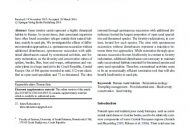Rok
2016Autoři
Jan MácaJiří Řehounek
Pavel Marhoul
Druhy
Micaria silesiaca L. Koch, 1875 VUArctosa cinerea (Fabricius, 1777) CR
Attulus saltator (O. Pickard-Cambridge, 1868) VU
Obsah
Open interior sands represent a highly threatened habitat in Europe. In recent times, their associated organisms have often found secondary refuges outside their natural habitats, mainly in sand pits. We investigated the effects of different restoration approaches, i.e. spontaneous succession without additional disturbances, spontaneous succession with additional disturbances caused by recreational activities, and forestry reclamation, on the diversity and conservation values of spiders, beetles, flies, bees and wasps, orthopterans and vascular plants in a large sand pit in the Czech Republic, Central Europe. Out of 406 species recorded in total, 112 were classified as open sand specialists and 71 as threatened. The sites restored through spontaneous succession with additional disturbances hosted the largest proportion of open sand specialists and threatened species. The forestry reclamations, in contrast, hosted few such species. The sites with spontaneous succession without disturbances represent a transition between these two approaches. While restoration through spontaneous succession favours biodiversity in contrast to forestry reclamation, additional disturbances are necessary to maintain early successional habitats essential for threatened species and open sand specialists. Therefore, recreational activities seem to be an economically efficient restoration tool that will also benefit biodiversity in sand pits.



